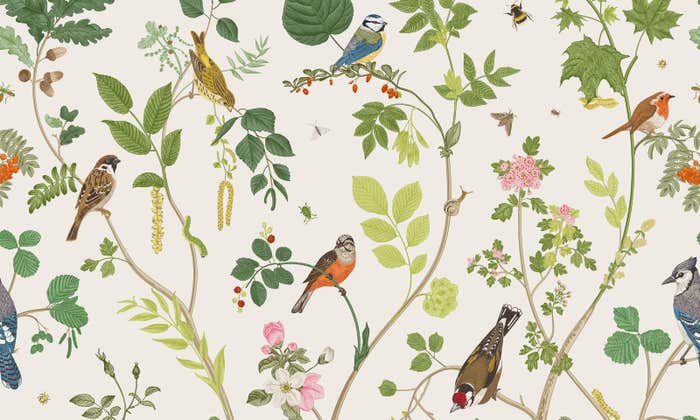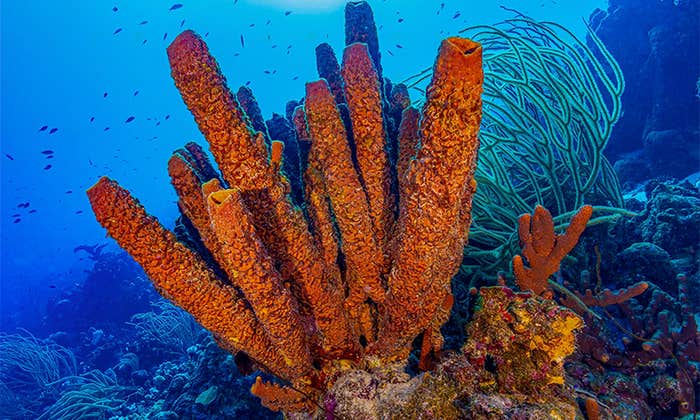The 19th-century physicist Hermann von Helmholtz compared his progress in solving a problem to that of a mountain climber “compelled to retrace his steps because his progress stopped.” A mountain climber, von Helmholtz said, “hits upon traces of a fresh path, which again leads him a little further.” The physicist’s introspection provokes the question: How do creative minds overcome valleys to get to the next higher peak?
Because thinking minds are different from evolving organisms and self-assembling molecules, we cannot expect them to use the same means—mechanisms like genetic drift and thermal vibrations—to overcome deep valleys in the landscapes they explore. But they must have some way to achieve the same purpose. As it turns out, they have more than just one—many more. But one of the most important is play.
I don’t mean the rule-based play of a board game or the competitive play of a soccer match, but rather the kind of freewheeling, unstructured play that children perform with a pile of LEGO blocks or with toy shovels and buckets in a sandbox. I mean playful behavior without immediate goals and benefits, without even the possibility of failure.

Play is so important that nature invented it long before it invented us. Almost all young mammals play, as do birds like parrots and crows. Play has been reported in reptiles, fish, and even spiders, where sexually immature animals use it to practice copulation. But the world champion of animal play may be the bottlenose dolphin, with 37 different reported types of play. Captive dolphins will play untiringly with balls and other toys, and wild dolphins play with objects like feathers, sponges, and “smoke rings” of air bubbles that they extrude from their blowholes.
Such widespread play must be more than just a frivolous whim of nature. The reason: It costs. Young animals can spend up to 20 percent of their daily energy budget goofing around rather than, say, chasing dinner. And their play can cause serious problems. Playing cheetah cubs frequently scare off prey by chasing each other or by clambering over their stalking mother. Playing elephants get stuck in mud. Playing bighorn sheep get impaled on cactus spines. Some playful animals even get themselves killed. In a 1991 study, Cambridge researcher Robert Harcourt observed a colony of South American fur seals. Within a single season, 102 of the colony’s pups were attacked by sea lions, and 26 of them were killed. More than 80 percent of the killed pups were attacked while playing.
With costs this high, the benefits can’t be far behind. And indeed, where the benefits of play have been measured, they can make the difference between life and death. The more feral horses from New Zealand play, for example, the better they survive their first year. Likewise, Alaskan brown bear cubs that played more during their first summer not only survived the first winter better, but also had a better chance to survive subsequent winters.
Male spiders practice how to copulate fast enough to get away from a female before other males attack them.
Some purposes of such play have nothing to do with mental problem solving. When horses play, they strengthen their muscles, and that very strength can help them survive. When lion cubs play-fight, they prepare for the real fights that will help them dominate the group. When dolphins play with air bubbles, they are honing their skills at confusing and catching prey. And when male spiders play at sex, they practice how to copulate fast enough to get away from a female before other males attack them.
But at least in mammals, play goes beyond mere practice of a stereotypical behavior, like that of a pianist rehearsing the same passage over and over again. When mammals stalk, hunt, and escape, they find themselves in ever-new situations and environments. Marc Bekoff, a researcher at the University of Colorado and a lifelong student of animal behavior, argues that play broadens an animal’s behavioral repertoire, giving them the flexibility to adapt to changing circumstances. In other words, animal play creates diverse behaviors, regardless of whether that diversity is immediately useful. It prepares the player for the unexpected in an unpredictable world.
That very flexibility can also help the smartest animals solve difficult problems. A 1978 experiment demonstrated its value for young rats. In this experiment, some rats were separated from their peers for 20 days by a mesh in their cage, which prevented them from playing. After the period of isolation, the researchers taught all the rats to get a food reward by pulling a rubber ball out of the way. They then changed the task to a new one where the ball had to be pushed instead of pulled. Compared to their freely playing peers, the play-deprived rats took much longer to try new ways of getting at the food and solving this problem.
University of Cambridge ethologist Patrick Bateson linked observations like this more directly to the landscapes of creation when he argued that play can “fulfill a probing role that enables the individual to escape from false endpoints, or local optima” and that “when stuck on a metaphorical lower peak, it can be beneficial to have active mechanisms for getting off it and onto a higher one.” In this view, play is to creativity what genetic drift is to evolution and what heat is to self-assembling molecules.
If that is the case, it is hardly surprising that creative people often describe their work as playful. Alexander Fleming, who would discover penicillin, was reproved by his boss for his playful attitude. He said, “I play with microbes … It is very pleasant to break the rules and to find something that nobody had thought of.” Andre Geim, 2010 Nobel laureate in physics, declared that “a playful attitude has always been the hallmark of my research … Unless you happen to be in the right place and the right time, or you have facilities no one else has, the only way is to be more adventurous.” When James Watson and Francis Crick discovered the double helix, they had help in the form of colored balls they could stick together—LEGO-like—to build a model. In Watson’s words, all they had to do was “begin to play.” And C.G. Jung, one of the fathers of psychoanalysis, said it best: “The debt we owe to the play of imagination is incalculable.”
One hallmark of play is that it suspends judgment so that we are no longer focused on selecting good ideas and discarding bad ones. That’s what allows us to descend into the valleys of imperfection to later climb the peaks of perfection. But play is only one means to get there.
Less deliberate but just as powerful are the dreams that we experience in our sleep. It is no coincidence that the psychologist Jean Piaget, whose trailblazing research helped us understand how children develop, likened dreaming to play. It is in dreams that our minds are at their freest to combine the most bizarre fragments of thoughts and images into novel characters and plotlines. Paul McCartney famously first heard his song “Yesterday” in a dream and did not believe that it was an original song, asking people in the music business for weeks afterward whether they knew it. They didn’t. “Yesterday” would become one of the 20th century’s most successful songs, with 7 million performances and more than 2,000 cover versions. Another dream whispered to the German physiologist Otto Loewi the idea for a crucial experiment, which proved that nerves communicate through chemicals that we now call neurotransmitters. It would win him a Nobel Prize.
Mind-wandering is staggeringly frequent. The typical mind is absent between a third and half the time.
Even in the state of half-sleep—psychologists call it hypnagogia—our minds are sufficiently loose to descend from those lowly hills. In this state, August Kekule, saw the structure of benzene, Mary Shelley found the idea for her iconic novel Frankenstein, and Dmitri Mendeleev discovered the periodic table of the chemical elements.
Similar to playing and dreaming is the wandering of our minds. Ninety-six percent of adult Americans report that it happens to them daily—the other 4 percent may be too absent-minded to notice. To quantify how often any one mind wanders during a task is simple: Ask. Interrupt people who work on the task and ask what’s on their mind. Or let mobile phones do the work for you. Program them to send study participants a text asking what they are thinking about at random times of the day. When psychologists do that, they find that mind-wandering is staggeringly frequent. The typical mind is absent between a third and half the time.
Mind-wandering is often considered a harmless quirk, as in the cliché of the scatter-brained professor. But it has real consequences. Let’s begin with the bad ones. Absentminded people perform less well on tests that require focused attention, such as reading comprehension tests. More worrisome, they also perform more poorly on tests that you better not flunk if you have any career aspirations. Among them is the Scholastic Aptitude Test that many colleges require for admission.
But mind-wandering also has an upside—at least for well-trained minds. Indeed, many anecdotes of creators like Einstein, Newton, and eminent mathematician Henri Poincaré, report that these scientists solved important problems while not actually working on anything. The common wisdom that the best ideas arrive in the shower is exemplified by Archimedes’s discovery of how to measure an object’s volume. (OK, he was in a bathtub.) But while Archimedes’s discovery was triggered by the rising water as he entered the tub, other breakthroughs surface apropos of nothing. Take this well-known quote from the Poincaré describing a period in his life when he had worked without success on a mathematical problem:
Disgusted with my failure, I went to spend a few days at the seaside, and thought of something else. One morning, walking on the bluff, the idea came to me, with … brevity, suddenness, and immediate certainty, that the arithmetic transformations of indeterminate ternary quadratic forms were identical with those of non-Euclidean geometry.
The apparently idle period before such insights arrive has a name: incubation. If hard and seemingly futile work on a difficult problem is followed up with a less demanding activity that does not require complete focus—walking, showering, cooking—a mind is free to wander. And when that mind incubates the problem, it can stumble upon a solution.
Incubation is as unconscious as it is real, and it enhances creativity. In one experiment making that point, 135 college students took a psychological test for creativity that required them to find unusual uses for everyday objects, like bricks or pencils. A few minutes into the test, the psychologists running the experiment interrupted some students and gave them an unrelated task. The new task did not take much effort—the students were shown a series of digits and had to tell which of them were even or odd—but it distracted the students from the test. After that interruption, the students continued with the creativity test, and they found more-creative answers than a second group of students who had not been given the distracting task.
Students in a third group got a break like the first, but they were given a harder task that required more focus. And, lo and behold, their answers were less creative than those of the first group. The conclusion: Undemanding tasks—easy enough to require little attention, but hard enough to prevent conscious work on a problem—can free a mind to wander and solve a problem creatively.
If mind-wandering impacts creativity, then its opposite, the control of attention practiced in mindfulness meditation, should have the opposite effects, both good and bad. And indeed it does. A 2012 study showed, for example, that mindfulness meditation, by reducing mind-wandering, can improve scores on standardized academic tests. In contrast, less mindful individuals perform better on creativity tests like that just mentioned.
The message is clear: Just as biological evolution can require a balance between natural selection, which pushes uphill, and genetic drift, which does not, so too does creativity require a balance between the selection of useful ideas—where a focused mind comes in handy—and the suspension of that selection to play, dream, or allow the mind to wander.
Andreas Wagner is the author of Life Finds a Way: What Evolution Teaches Us About Creativity. He is a professor and chairman at the Institute of Evolutionary Biology and Environmental Studies at the University of Zurich and an external professor at the Santa Fe Institute. He is also the author of four books on evolutionary innovation.
Adapted from Life Finds a Way: What Evolution Teaches Us About Creativity by Andreas Wagner. Copyright © 2019. Available from Basic Books, an imprint of Perseus Books, a division of PBG Publishing, LLC, a subsidiary of Hachette Book Group, Inc.
Lead Image: BlueMoonStore / Shutterstock


























